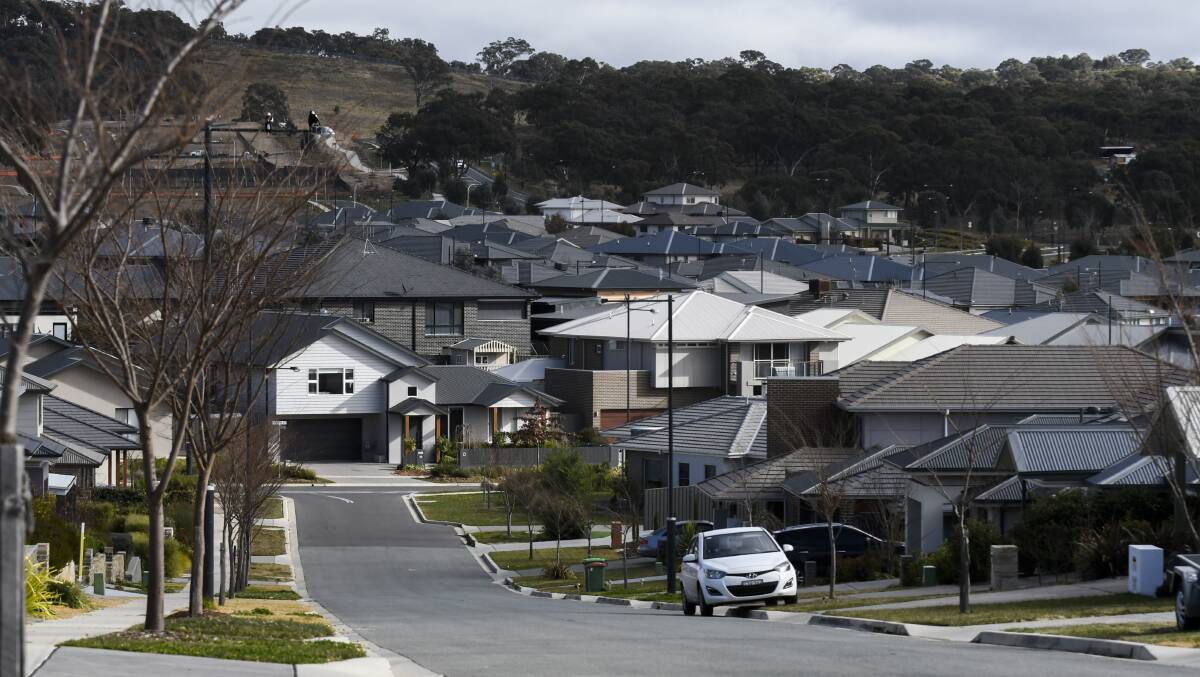
Canberrans may have heard talk of a shocking statistic, revealed as the 2021 census data was released.
Subscribe now for unlimited access.
or signup to continue reading
Even as rents continued to rise, over 1 million dwellings were unoccupied on census night across Australia, with more than 11,000 unoccupied in the ACT alone.
Those Canberrans who pointed to this statistic as the source of our housing affordability problem are right to focus on supply as being the core of the issue. But if we really want to build enough homes for all Canberrans, we need to look beyond unoccupied homes, and start looking at those that our planning laws make impossible to build.
It's worth recapping the argument made by those who focus on vacant housing statistics. Currently, many Canberrans simply can't afford to rent or buy a home. Increasing the number of homes for rent would be good for renters, because it gives them more choice, and more power to bargain down prices. So why not start taxing property owners who deliberately keep their homes vacant?
There's certainly evidence that taxing vacant houses can modestly reduce rents, but it's not a silver bullet. Some Australian cities are already taxing vacant land to improve housing affordability - Melbourne already has a vacancy tax, while Canberra's shift to land value taxation provides a similar incentive for owners to make best use of unoccupied property.
The issue with vacancy taxes isn't that they don't work - it's that they don't go far enough to increase the housing supply. Not all homes that were unoccupied on census night were truly vacant, and of those that are, there's only a small number that are both liveable and well-located. This is why Canberra rents continued to rise, even as the proportion of Canberran dwellings that were unoccupied in 2021 fell significantly from 2016 levels.
READ MORE:
On the other hand, there's huge potential to build more homes in high-demand areas by reforming our planning laws. Numerous studies have shown that reforms to local planning regulations can improve housing supply, by allowing more medium density homes to be built in sought-after suburbs.
A review of 2016 medium density planning reforms in Auckland found that they had doubled the rate at which new homes were built. And building denser housing near to jobs and amenities would help meet climate targets, by reducing the need for cars and limiting tree-destroying expansion on the urban periphery. These findings are particularly relevant to Canberra, where in much of our city it's legal to build a two story mansion, but not a four-unit apartment building of exactly the same size.
Fortunately, the ACT government's upcoming Territory Plan refresh represents a unique opportunity for Canberra policymakers to tackle this issue. There are numerous potential areas of reform: allowing more duplexes and terrace houses in suburbs, up-zoning areas near to rapid bus routes, and removing the ability of wealthy neighbours to hold up social housing projects with endless legal disputes.
If we believe the evidence that says housing supply is key to solving our housing crisis, then we shouldn't just be looking to tax vacant homes. We should be looking to build more of them.
- Ed Smyth is treasurer of Greater Canberra, a community group advocating for reforms to the ACT planning system to create a more affordable and sustainable Canberra.

